The thought of passing a kidney stone is unnerving.
The sharp, stabbing, “writhing-on-the-floor” pain generally starts in the flank, radiates to the front of the body and then travels to the groin. Often described as the worst pain of one’s life, women claim it is worse than childbirth. The pain, called renal colic, can last from minutes to hours and can be so intense that it results in nausea and vomiting.
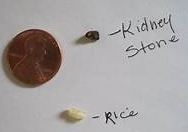 Just as alarming is the fact that kidney stones are one of the most common disorders of the urinary tract, a disorder that one in ten of us will develop in our lifetime. Once a person develops a stone, half will experience a second episode within five years.
Just as alarming is the fact that kidney stones are one of the most common disorders of the urinary tract, a disorder that one in ten of us will develop in our lifetime. Once a person develops a stone, half will experience a second episode within five years.
However, there is good news.
Washington University’s Multidisciplinary Kidney Stone Clinic, now in its third year, is here to manage and treat those suffering from kidney stones and help prevent the risk of reoccurrence.
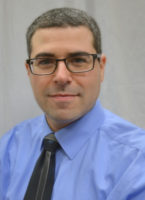
Dr. Seth Goldberg
Co-directed by nephrologist Seth Goldberg, MD, Associate Professor of Medicine, and urologist Alana Desai, MD, Assistant Professor of Surgery, the clinic brings together the expertise of two disciplines to provide a convenient, single point of care for patients.
The clinic was established in 2015 after Dr. Goldberg presented a lecture on the medical management of nephrolithiasis to a group of WU urologists. Dr. Desai, who had an abundance of stone patients she thought would benefit from metabolic evaluation to determine the underlying causes of their stones, suggested a collaboration.
Goldberg thought it was a great idea. “I said I’d love to! In fact, it was something we in our division had identified as a gap in our fellow training. The fellows would definitely benefit from a dedicated stone clinic. So, we fixed a problem for both divisions!”
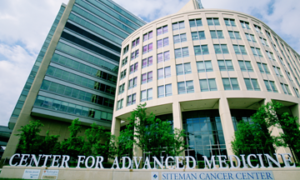 The Kidney Stone Clinic is located on the 11th floor of the Center for Advanced Medicine. “The patients come in, have one appointment and can see both a urologist and nephrologist, if necessary,” says Dr. Goldberg. “Kind of a ‘one-stop shopping’, which makes it convenient, especially for patients coming from a long distance away.”
The Kidney Stone Clinic is located on the 11th floor of the Center for Advanced Medicine. “The patients come in, have one appointment and can see both a urologist and nephrologist, if necessary,” says Dr. Goldberg. “Kind of a ‘one-stop shopping’, which makes it convenient, especially for patients coming from a long distance away.”
Since kidney stones usually present acutely, the first goal of the clinic is to quickly relieve pain, and then remove the stone, if needed. The second goal is to determine the cause of the stone to reduce a recurrence.
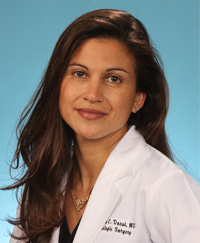
Dr. Alana Desai
“Dr. Desai will typically address the imaging aspects of the case, which include ultrasound, CT and X-ray, interpret the imaging, and decide what procedure, if any, the patient might need,” says Goldberg. The clinic has performed thousands of lithotripsy treatments, a non-invasive procedure that uses shock waves to break up the stones. Additional treatments include endoscopic stone removal, percutaneous (through the skin) stone removal; in complex cases, laparoscopic or robotic procedures are utilized. All are considered minimally invasive surgery.
Goldberg addresses a patient’s case from the laboratory viewpoint – analyzing bloodwork, and, more importantly, the 24-hour urine collection to see if there are any medical risk factors. “I tell new patients that if there is a surgical issue and the need for a procedure, you don’t want me holding the scalpel! Dr. Desai will manage that. I’ll address how to prevent new stones from forming, or what can be done to prevent the current stones that are there from getting bigger.”
Taking on the role of a dietician, Goldberg looks for a strategy to help the patient move forward. “We pull up color-coded graphics of the results of the patient’s 24-hour urine on the computer and spend a good part of the visit going over risk factors, most notably the fluid balance, but also sodium intake, oxalate intake, and protein intake. The patient takes home a lot of educational material.”
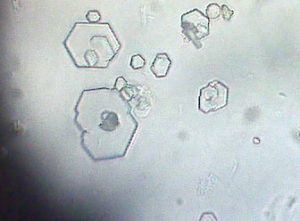 In addition, the patients are counseled about medication therapies. Many times, risk factors for these individuals will be high calcium, phosphorus, oxalate, and uric acid. “We have a number of medical options that are available.” The clinic is currently involved in a study investigating a new oxalate binder.
In addition, the patients are counseled about medication therapies. Many times, risk factors for these individuals will be high calcium, phosphorus, oxalate, and uric acid. “We have a number of medical options that are available.” The clinic is currently involved in a study investigating a new oxalate binder.
Occasionally, the clinic will see a patient with an unusual stone syndrome. “We’ll do a 24-hour urine and find nothing wrong with the patient’s diet, yet they still form stones,” says Goldberg, who is hoping to begin studies to investigate the genetic causes of kidney stones. Recent studies suggest particular mutations or polymorphisms might be associated with a higher risk of stone disease. “We are trying to get funding to identify pathways that might lead to calcium spillover into the urine.”
In all, the clinic sees patients with kidney stones from a wide variety of causes. From “run of the mill” stones to patients with medullary sponge kidney or tubular acidosis to more obscure genetic disorders, their stone population provides the perfect opportunity to educate urology and nephrology fellows. A fellow could easily see the “big five” types of stones – calcium oxalate, calcium phosphate, uric acid, cystine and struvite – on any one day in the clinic.
“Currently, on average, we see perhaps eight to ten patients in the half-day clinic,” says Goldberg. “We meet twice a month. We have seen more than 350 patients since 2015.”
 If there is one take-away message about how to prevent kidney stones in the first place, it is the importance of increasing fluid intake. “It’s interesting,” says Goldberg, “we can have a patient who has poor control of all the things that put a person in a high risk category – but if they drink five and a half liters of water a day, the actual risk of forming stones is low. Another patient may have wonderful control of the same risk factors, but if they drink only one liter of water a day, their risks are actually higher than the previous patient.”
If there is one take-away message about how to prevent kidney stones in the first place, it is the importance of increasing fluid intake. “It’s interesting,” says Goldberg, “we can have a patient who has poor control of all the things that put a person in a high risk category – but if they drink five and a half liters of water a day, the actual risk of forming stones is low. Another patient may have wonderful control of the same risk factors, but if they drink only one liter of water a day, their risks are actually higher than the previous patient.”
Dr. Desai is currently overseeing the WU arm of the Prevention of Urinary Stones with Hydration (PUSH) multicenter study. PUSH is a multicenter study that will test novel ways to help patients reach and maintain fluid intake goals to prevent kidney stones. The program will use financial incentives, health coaching and electronic reminders to determine the best way to encourage patients to drink more water.
PUSH participants will receive a “smart” water bottle that syncs with an app on their mobile device. The app will track water intake and remind the patient to drink water throughout the day. In this randomized trial, some of the patients will get extra support to achieve their goals by receiving incentives and personalized coaching. To find out more about the study, please contact Juanita Taylor at (314) 454-7047 or email study coordinators at PUSH@wustl.edu. Watch a video explaining the PUSH study here.
“We can’t stress enough that there are few things in medicine that are as cost-effective as hydration,” Goldberg points out. “Patients can offset five or six other risk factors by simply drinking more fluid. It’s cheap, it’s safe, and it’s likely highly effective!”
For more information on the Kidney Stone Clinic, contact Nurse Coordinator, Joann Reagan at (314) 362-7581.